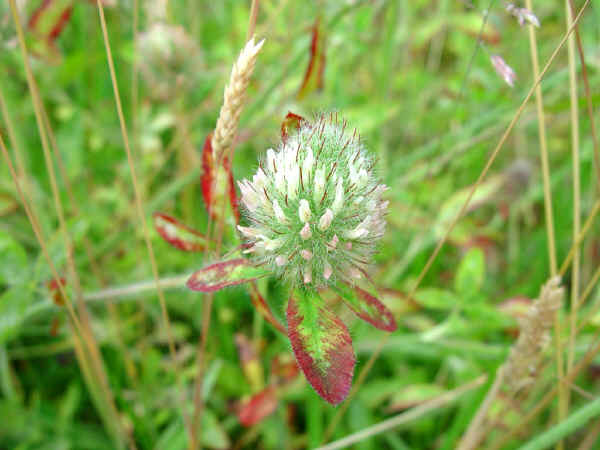ALEXANDRIAN CLOVER - ORGANIC
Have a question?

ALEXANDRIAN CLOVER - ORGANIC
Dettagli
The Alexandrian clover is among the most interesting annual fodder legume species both for the Mediterranean environments (in the autumn-spring cycle) and for the Central-Northern European areas (in the spring-summer cycle).
Originally from Asia Minor, it has been cultivated for a long time in its area of origin, in India, throughout the Mediterranean basin and in central-northern Europe; in the United States its cultivation is limited to the eastern temperate regions and the South-Western area.
At least 4 biotypes of the Alexandrian clover can be distinguished which differ in biological characteristics, size and regrowth capacity of the plant: "Fahl", of greater development capable of providing a single cut; 'Saidi', drought resistant with deep root system and capable of providing 2-3 cuttings; Long-cycle, late-cycle "Kadrawi" typically provides 2-3 cuttings or more if irrigated; "Miskawi", early developing, capable of providing 3-4 cuts, is the most widespread in Italy and Europe. The first three are instead grown in warmer areas.
 Alexandrian clover - Trifolium alexandrinum L. (photo www.kuleuven-kortrijk.be )
Alexandrian clover - Trifolium alexandrinum L. (photo www.kuleuven-kortrijk.be )
Botanical characters
The plant has an erect habit, hollow stems, trifoliate compound leaves with narrow, sessile leaflets, carried by a long peduncle with enveloping stipules and axillary ramifications, basal shoots produced by the collar buds in succession throughout the cycle with intensity in relation to the conditions environmental and use, flower head inflorescence with white flowers.
Environmental needs and cultivation technique
The Alexandrian clover is native to temperate-warm climates, it does not tolerate temperatures below 0 °C and resists high temperatures well (up to 40 °C).
In order to germinate, the seeds require good humidity conditions and a temperature of at least 8-9 °C. In favorable conditions, the emergence of the seedlings occurs in 3-4 days. Low temperatures slow down or stop the vegetative activity of young seedlings, causing the leaves to take on a characteristic reddish color. Requires at least 8-10°C to begin stem growth. Flowering occurs with temperatures of at least 18-20 °C and begins 120-150 days after sowing in autumn sowing and after only 40-60 days in spring sowing.
From a podiatric point of view, the Alexandrian clover is considered a species of limited needs.
It is an improving species due to its taproot system rich in root tubercles.
It is also well suited for the establishment of oligophyte herbaceous plants.
In temperate climates and neutral or alkaline soils it replaces the clover incarnate in Landsberger mixtures.
It is generally believed that the Alexandrian clover is not very demanding in terms of tillage, being in the south often sown on firm ground, however in the clayey soils of the same environment the plowing approximately 30 cm deep in the month of August, repeated harrowing works and the leveling of the surface after the first autumn rain events are favorable conditions for obtaining a good herbage.
Irrigation is more widespread in central and northern Italy, in southern Italy and on the islands the crop is usually dry.
The harvesting of the alexandrino for the production of forage is generally carried out when the plant has just released the basal shoots which will produce the new stems and therefore the regrowth, for this reason the cutting or grazing must be carried out in such a way as not to damage the shoots basal.
Variety and use
Currently in Italy 7 varieties are registered in the national register ("Akenaton", "Alex", "Axe", "Laura", "Miriam", "Lilibeo" and "Sacromonte" with the first 5 registered only after 1990.
Among the foreign varieties of some interest are "Bigbee" and "Multicut", "Wafir" and "Giza", and the tetraploids "Pusa Giant" and "Lage Giant".
The objectives of genetic improvement concern: increasing resistance to low temperatures and water stress, prolonging the biological cycle, increasing overall productivity and individual uses, improving quality.
Currently the seed is mostly obtained with the last shoot of common crops planted for the production of forage (grazed and with a subsequent clearing cut or cut to obtain fresh forage or silage).


